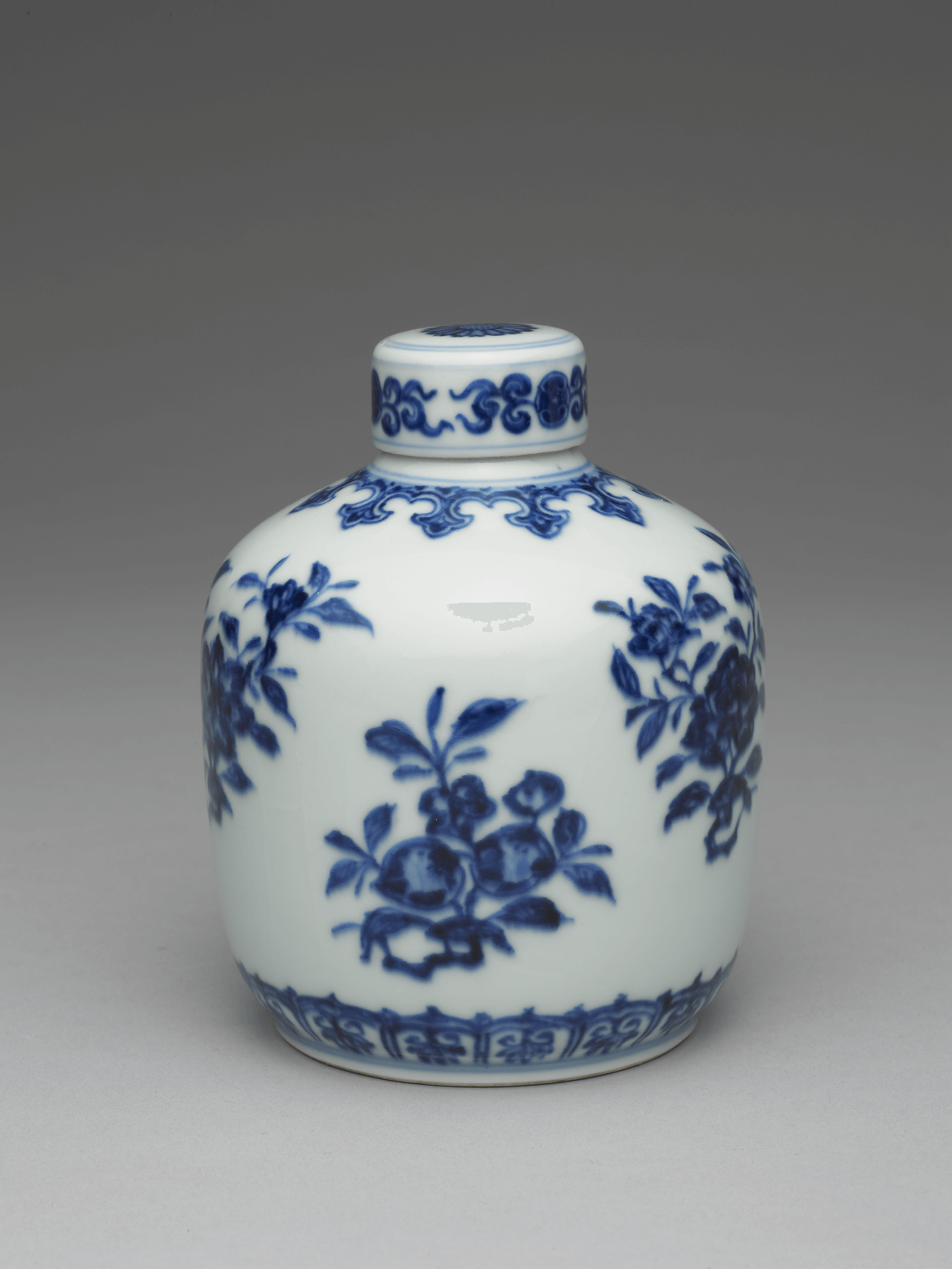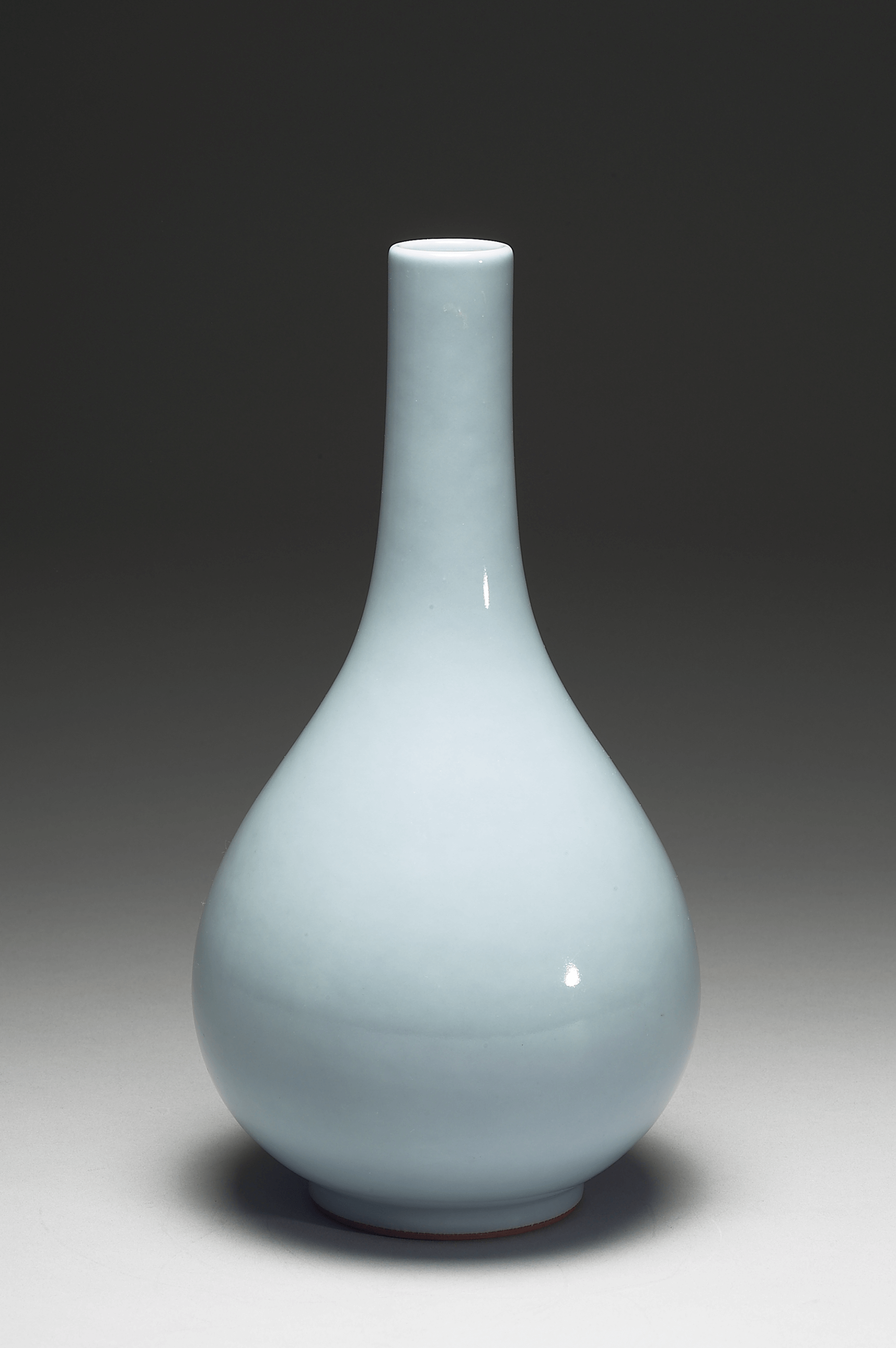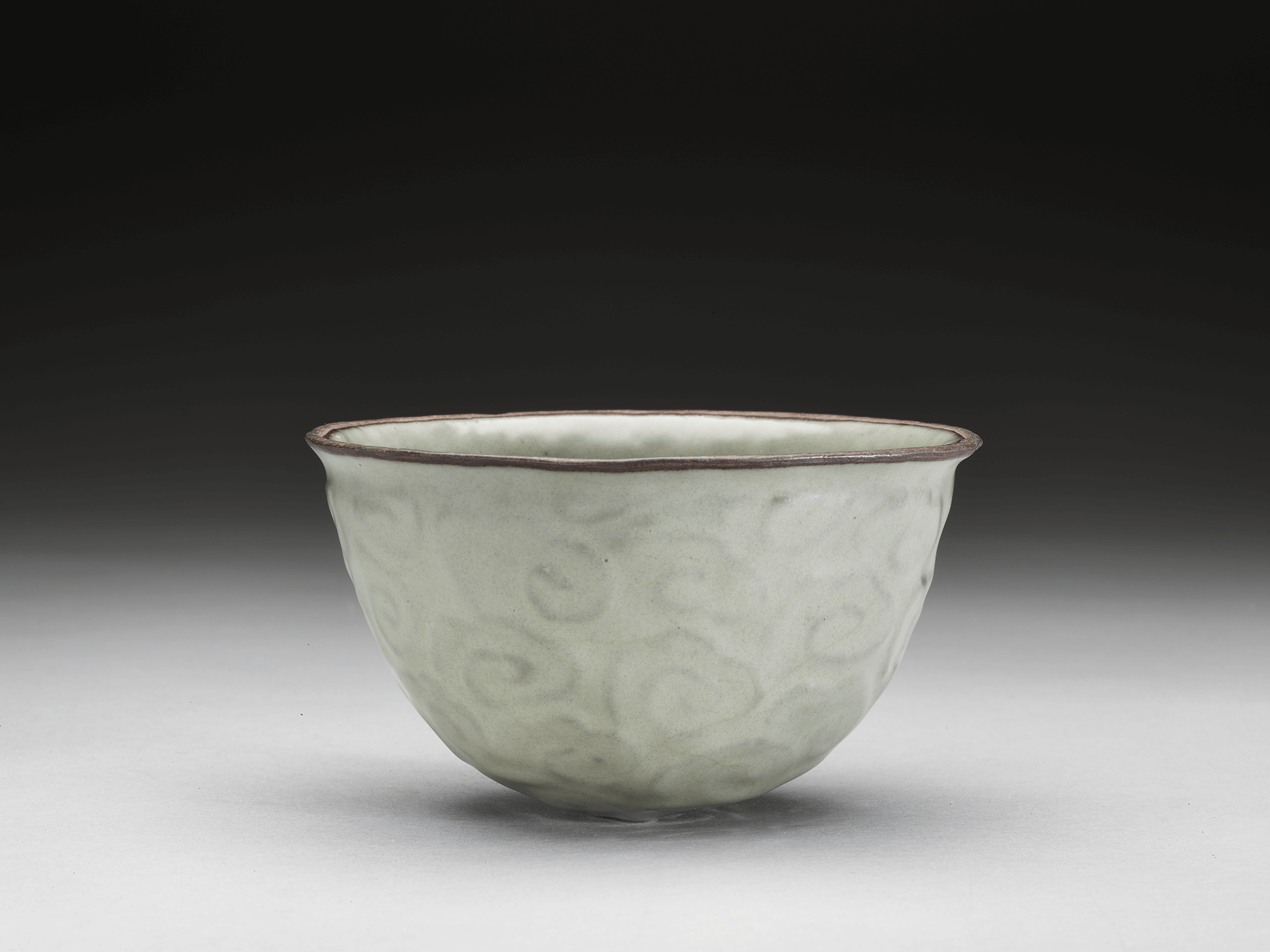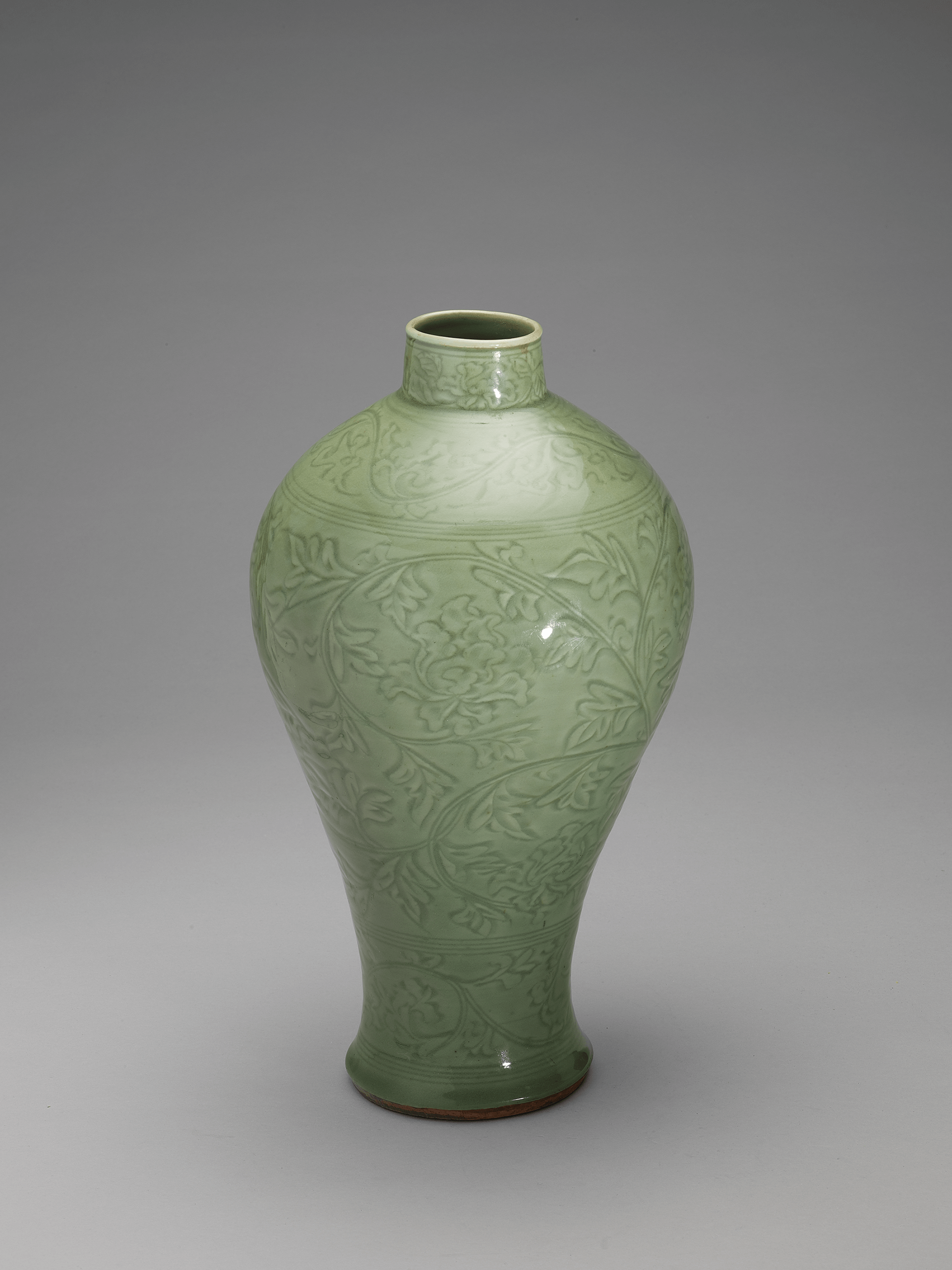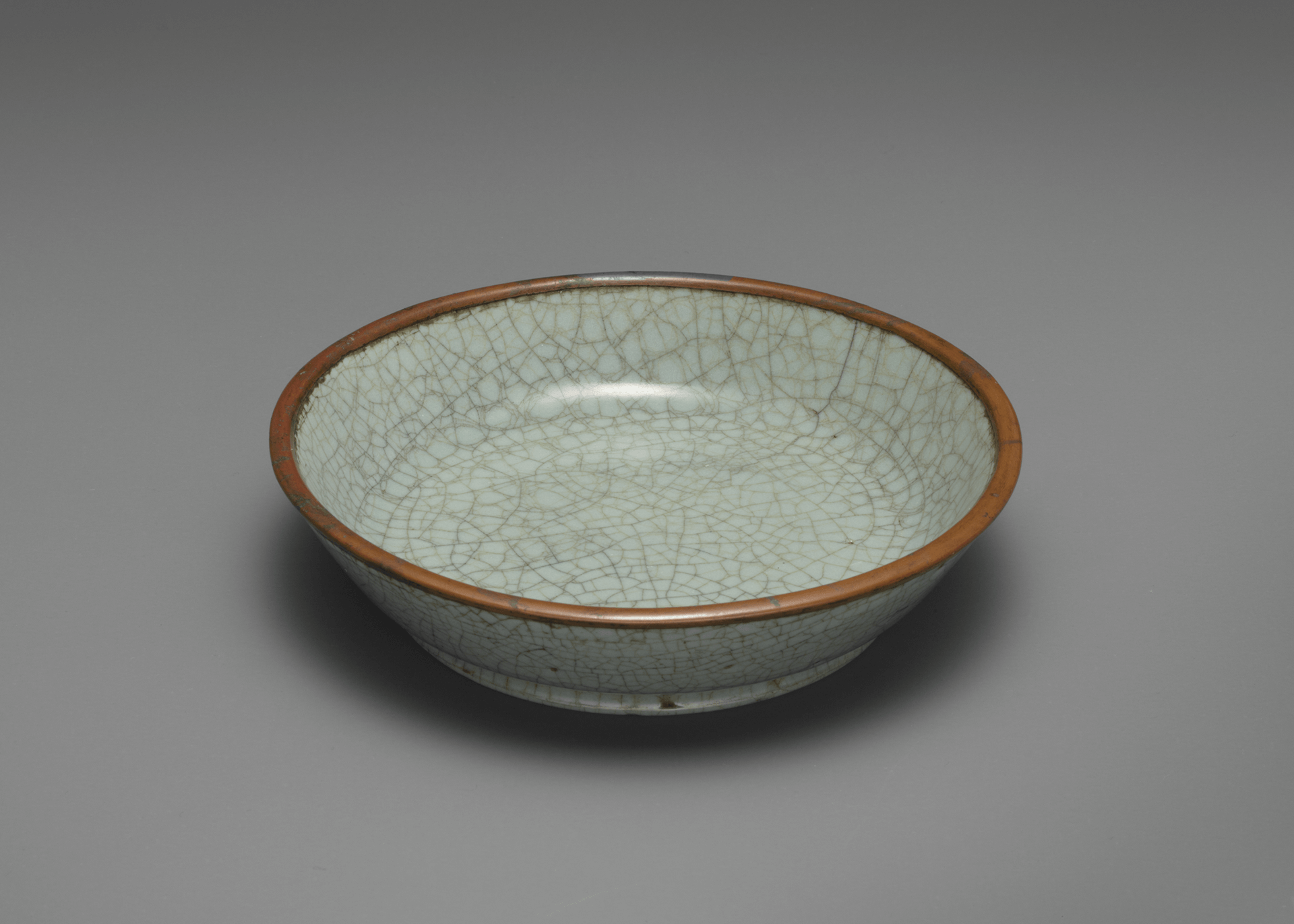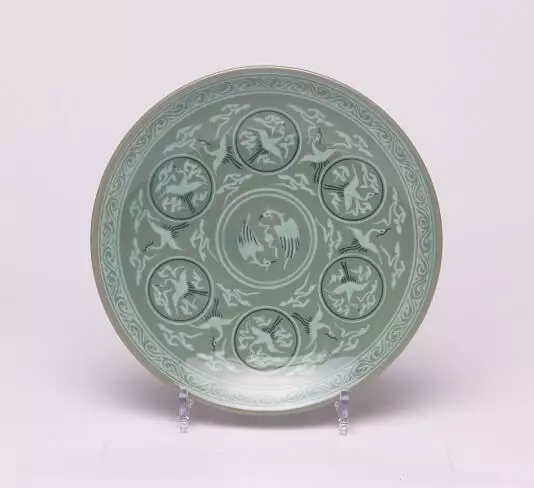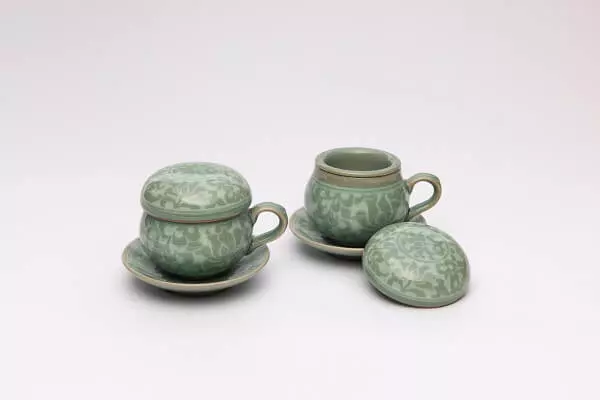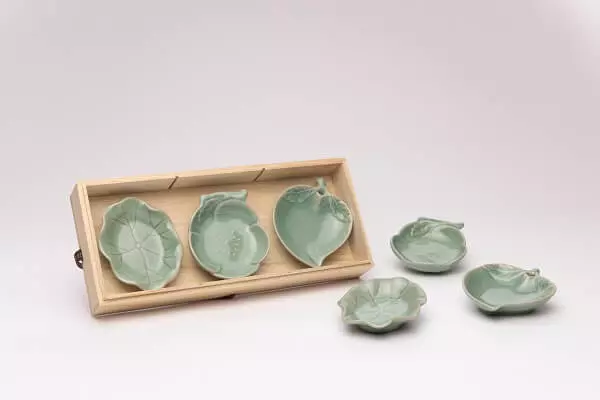

Celadon: A Millennium of Jade-Like Beauty
Celadon’s beauty rests in the soft, serene shade of green—like the first veil of mist rising over a lake at dawn, clear yet gentle, concealing within it a quiet grace that rewards contemplation. Under shifting light, its glaze deepens and softens by turns, leaving behind a resonance that lingers long after the eye has moved away.
Curator / HUAN-PENG CHANG
Updated at 2025-10-14
Preface
If porcelain were to have its own “Hall of Fame,” blue-and-white ware (青花瓷) would no doubt claim a place among the top three. Its renown has only grown in recent decades, carried on the notes of the beloved song of the same name—etched into popular imagination and sung across the Chinese-speaking world for nearly two decades. Yet celadon (青瓷)—differing only by a single Chinese character—possesses a lineage far older, and a beauty no less captivating. Its fame today is quieter, more reserved, like a poised and graceful figure standing slightly apart, radiating a timeless elegance that draws the gaze of those who linger long enough to notice.
Celadon water jar from Edo-period Japan, believed to have been presented to the imperial court as tribute by the feudal lord of Hirado.
(Japan, Drum-shaped Water Jar in Celadon Glaze. National Palace Museum, Taipei, CC BY 4.0 @ www.npm.gov.tw)
A Beauty Resonating Across Time — The Quiet Splendor of Celadon
By the Eastern Han dynasty, the techniques of celadon production had already reached maturity. Among them, none was more celebrated than the Longquan celadon of Zhejiang during the Southern Song. Admired for being “green as jade, bright as a mirror, thin as paper, and resonant as a chime,” it remains to this day the benchmark of celadon aesthetics. Between the Tang and Song dynasties, kilns such as Yue, Longquan, Ru, and Yaozhou each rose to prominence, cultivating distinctive styles marked by refinement, subtle sophistication, and luster. Of these, the Ru kilns of the Northern Song were the most precious, long hailed as “the finest under heaven.” Today, fewer than a hundred Ru wares from the Song dynasty remain worldwide. At a Sotheby’s auction in Hong Kong, a Northern Song Ru-ware celadon washer fetched nearly 300 million Hong Kong dollars, a testament to its rarity and enduring allure.
From left to right:
1. A blue-and-white porcelain jar from the Yongzheng reign, decorated with floral motifs of graceful elegance. (Lidded Jar with Chrysanthemum Decoration in Underglaze Blue. National Palace Museum, Taipei, CC BY 4.0 @ www.npm.gov.tw)
2. The subtle, even glaze that made celadon a favorite among literati and connoisseurs. (Gallbladder-shaped Vase with Green Glaze. National Palace Museum, Taipei, CC BY 4.0 @ www.npm.gov.tw)
3. Southern Song official kilns that produced ceramics exclusively for the imperial court. (Lid with Cloud Decoration in Green Glaze, Guan Ware. National Palace Museum, Taipei, CC BY 4.0 @ www.npm.gov.tw)
4. Longquan, one of the five great kilns of the Song dynasty. (Meiping Vase with Incised Peony Decoration in Green Glaze, Longquan Ware. National Palace Museum, Taipei, CC BY 4.0 @ www.npm.gov.tw)
5. Dish in Celedon Glaze, Ru Ware. National Palace Museum, Taipei, CC BY 4.0 @ www.npm.gov.tw
Gifts of Friendship from Japan and Korea—The Beauty of Celadon
The history of celadon extends back more than three millennia, to the Shang dynasty. During the flourishing age of the Tang and Song dynasties, as maritime trade routes thrived, celadon craftsmanship traveled by sea from China to Korea and Japan. Over the centuries, it took root in new lands, gradually evolving into aesthetics of strikingly different character. From the 17th century onward, Japan’s Arita and Nabeshima wares bore the imprint of Chinese celadon, developing styles that blended imitation with innovation. By the 19th century, regions such as Kyoto, Aichi, Gifu, Ehime, and Hyogo each cultivated their own distinctive ceramic traditions—with Hyogo, in particular, coming to be regarded as a center of Japanese celadon.
This exhibition presents celadon gifts from Japan and Korea, each piece carrying its own aesthetic sensibility and technical character, together reflecting the diversity and cultural depth of East Asian ceramics.
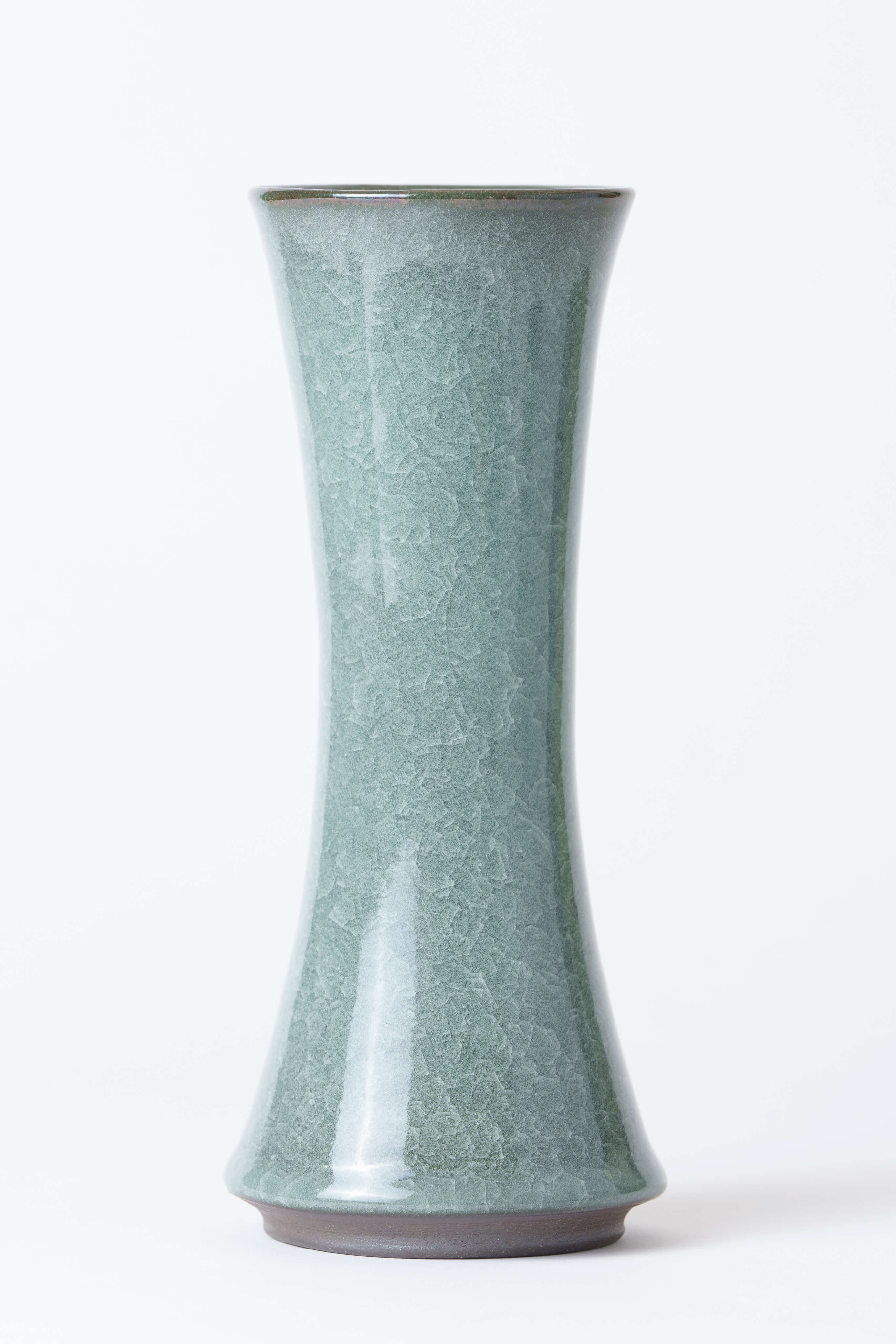
Celadon Glaze Vase
Among them is the Celadon Glaze Vase, a friendship gift from Ibaraki Prefecture in Japan, created by Onodera Yuji, a potter renowned for his mastery of crackled celadon. To highlight the intricate crackle pattern, the creator applied a particularly thick glaze, allowing the network of lines to emerge with depth and resonance. Like shards of ice interlacing across a frozen surface, the crackles shimmer delicately in shifting light, revealing both the artist’s devotion to celadon and the emotion infused in his craft.
A gift from Ibaraki Prefecture, this vase is coated with a thick celadon glaze that brings out its enchanting crackle pattern.
(Gifted by Odagawa Hiroshi, Mayor, Tsukubamirai City. <Read More “Celadon Glaze Vase”>)
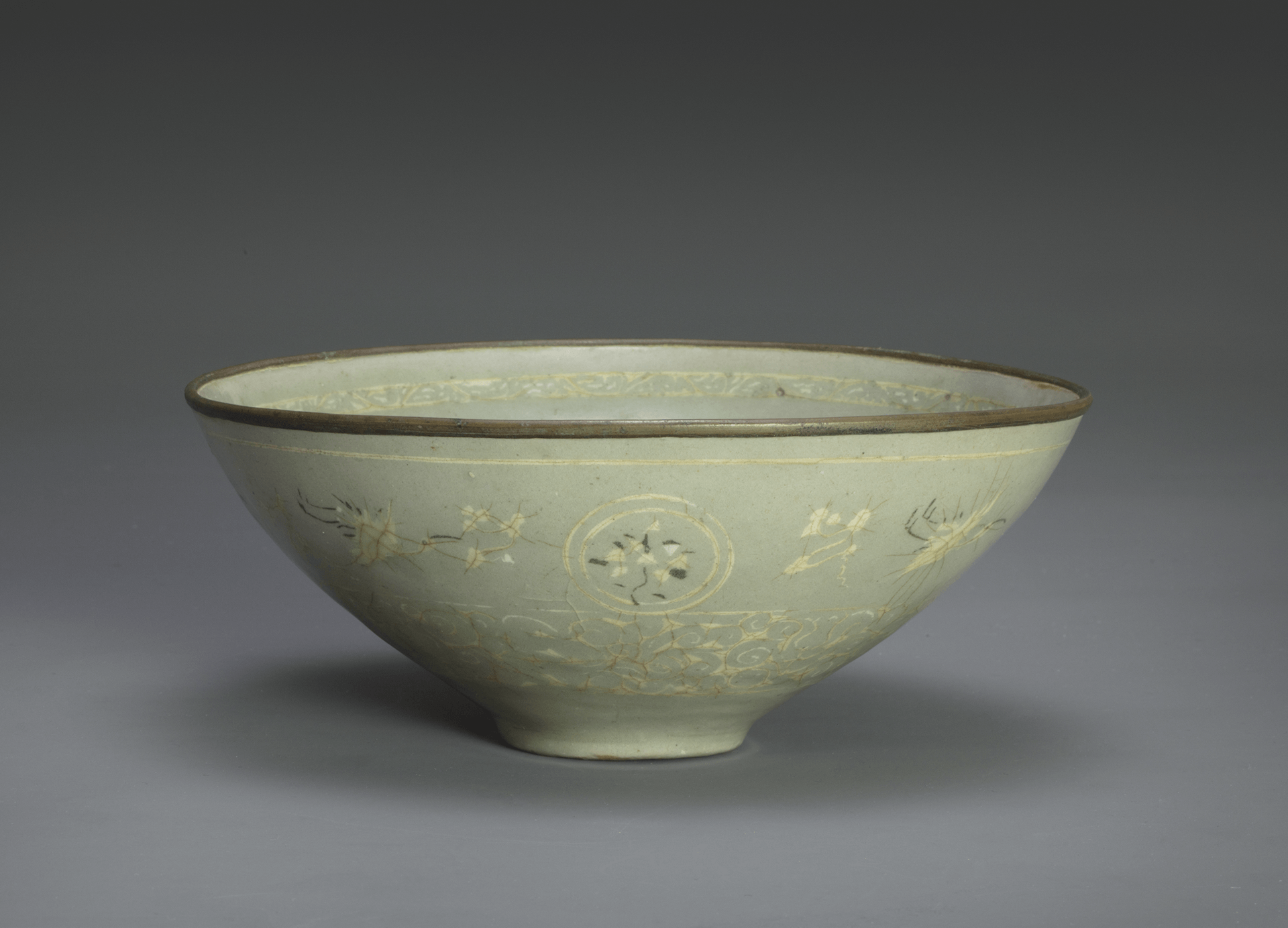
Distinctive Inlay Techniques of the Goryeo Dynasty — The Striking Character of Inlaid Celadon
Gangjin County in South Jeolla Province is celebrated as the birthplace of Goryeo celadon, often called the “Home of Celadon” in Korea. This small coastal city is not only home to a dedicated Celadon Museum but also hosts the annual Gangjin Celadon Festival, a vibrant cultural event that honors this celebrated craft.
Among the hallmarks of Goryeo celadon is its exceptional inlay technique.
(Celadon Bowl with Incised Cloud and Crane Pattern Filled in Black and White Clay, Korea. National Palace Museum, Taipei, CC BY 4.0 @ www.npm.gov.tw)
On view in this exhibition are several friendship gifts presented by the Korean Mission in Taipei: Goryeo Inlaid Celadon Ware, Traditional Celadon Tea Set, and Celadon Plate Set Gift Box. Together, they illustrate how Goryeo artisans, inspired by the porcelain technologies of the Tang and Song dynasties, transformed those influences into a style uniquely their own. Whether in the inlaid motifs of a celadon plate, the refined contours of a tea set, or the glaze and lines reminiscent of Song-dynasty Ru ware, these pieces embody both continuity and transformation across a millennium of ceramic artistry. The inlaid celadon of Goryeo, in particular, represents a defining innovation of 12th- to 13th-century kilns in South Jeolla, and hallmarks a powerful symbol of Korea’s celadon heritage. Each work reflects the artisans’ mastery and spirit, while enriching the shared aesthetic vocabulary of Asian ceramics.
From left to right:
1. The inlaid decoration of Goryeo celadon, a technique distinctive to Korea. (Gifted by Yang Chang-soo, Representative, Korean Mission in Taipei)
2. With tea culture flourishing in the Song dynasty, this traditional celadon tea set highlights the close cultural exchanges between Song China and Goryeo Korea. (Gifted by Kang Young-hoon, Representative, Korean Mission in Taipei)
3. The forms and glazes of Goryeo celadon reveal clear influences from Song-dynasty Ru ware. (Gifted by Kang Young-hoon, Representative, Korean Mission in Taipei)
Celadon, which first emerged more than three millennia ago in China’s Shang dynasty, spread and evolved over time, profoundly shaping the ceramic traditions of both Korea and Japan. Each region developed its own distinctive aesthetics, blending local culture with inherited techniques. Across centuries of transformation, this enduring beauty now reappears in the form of treasured gifts from allied nations—quietly carrying forward a grace that transcends eras.

